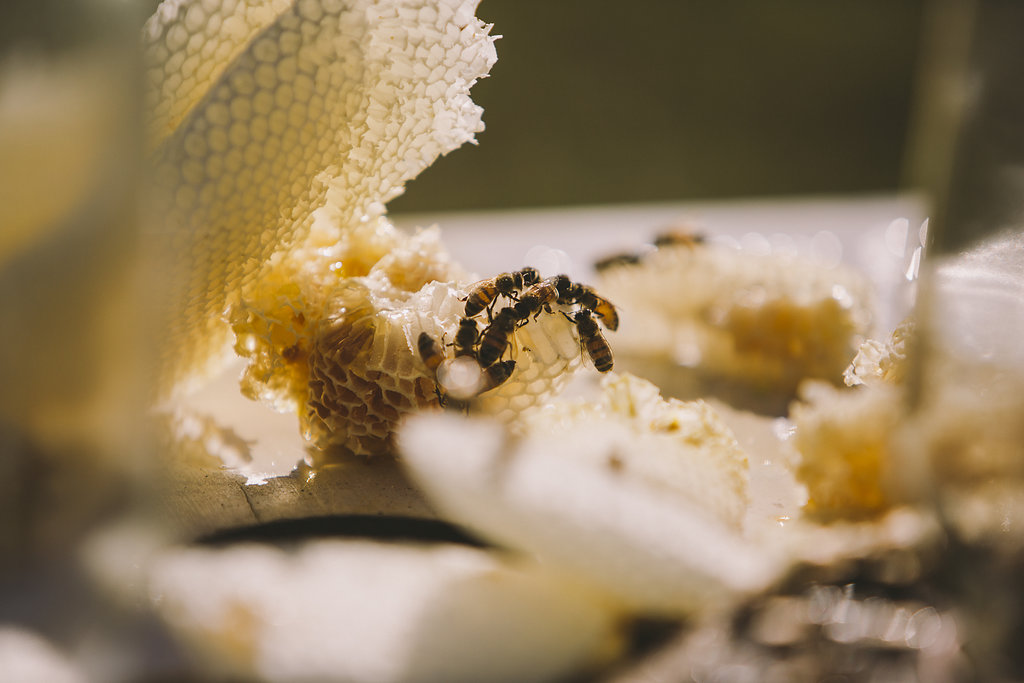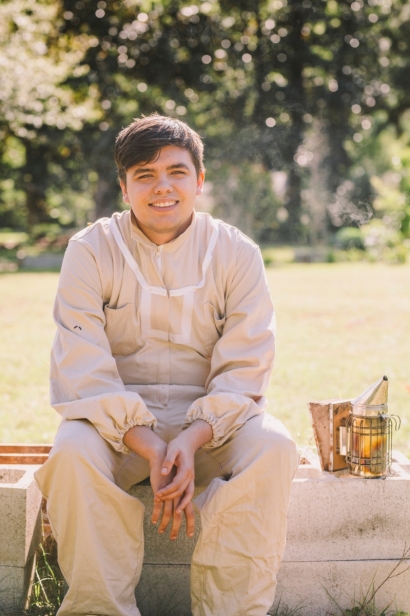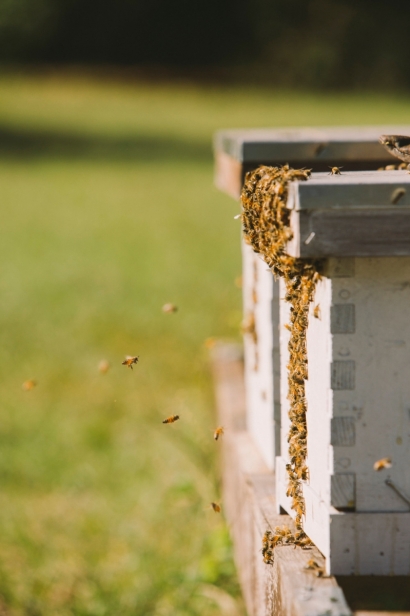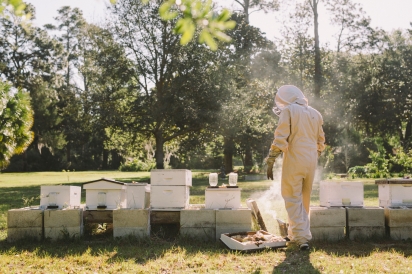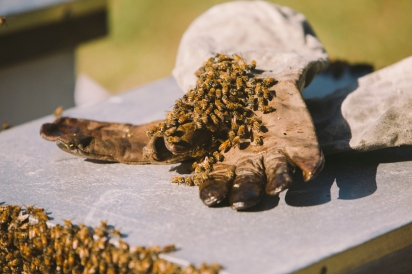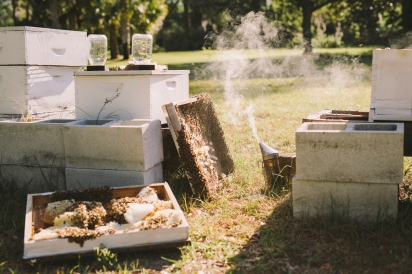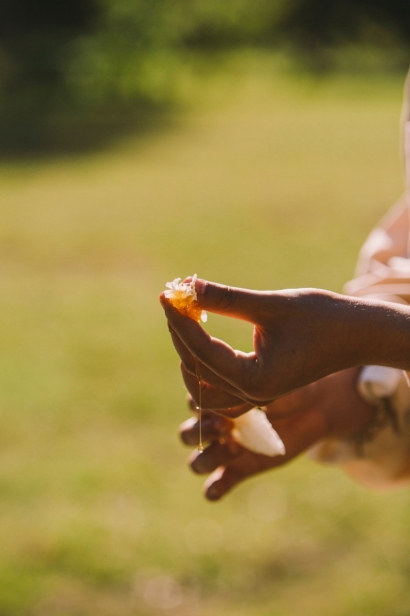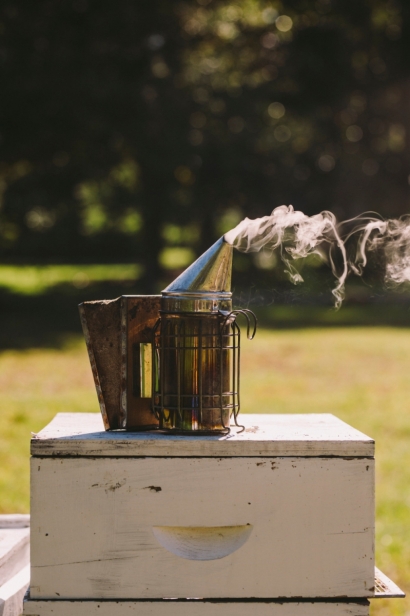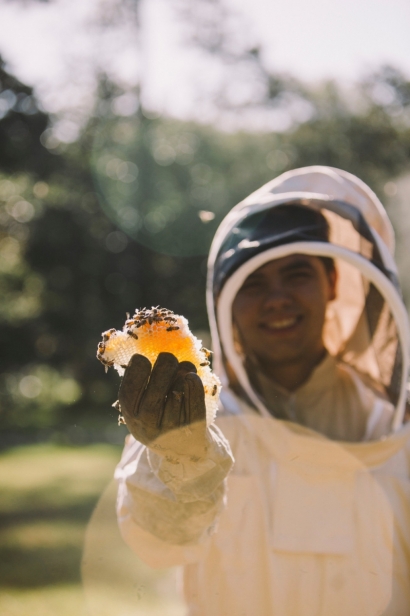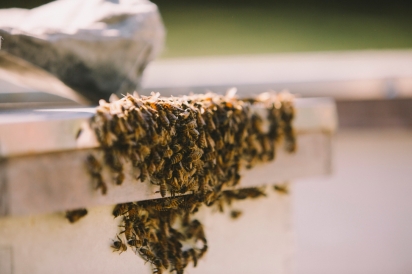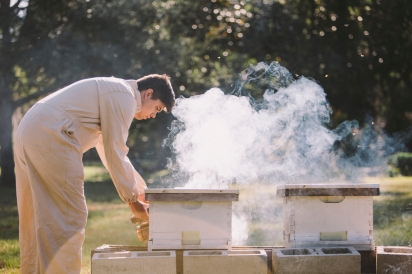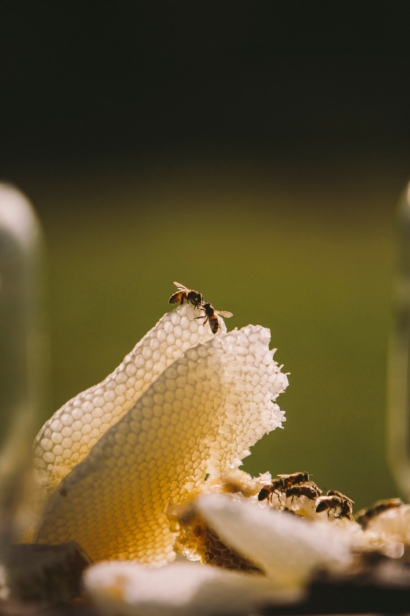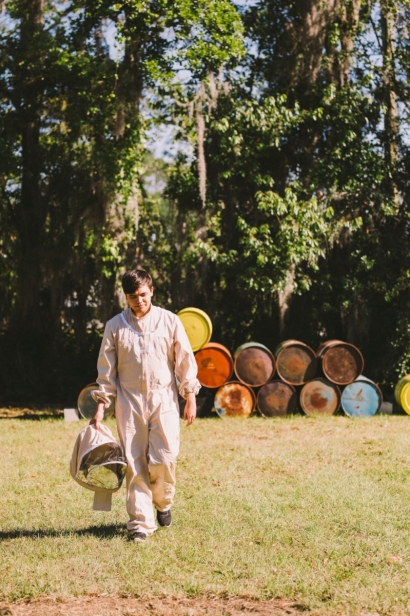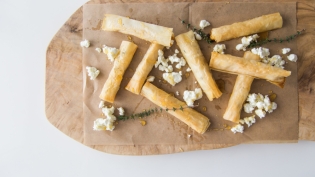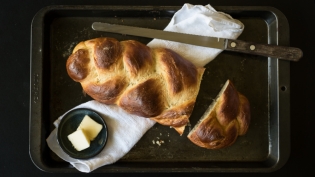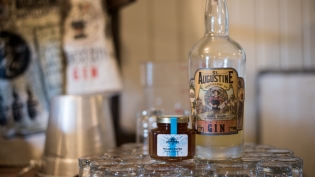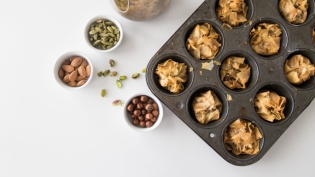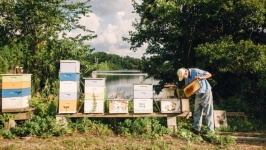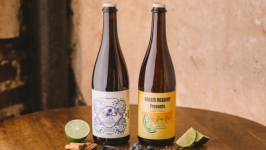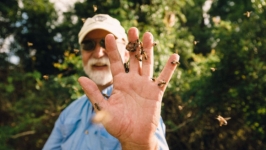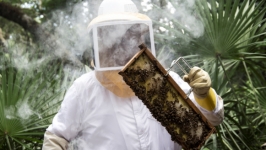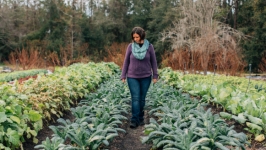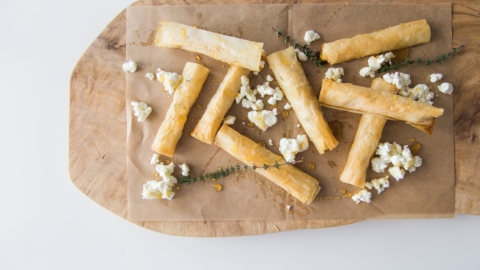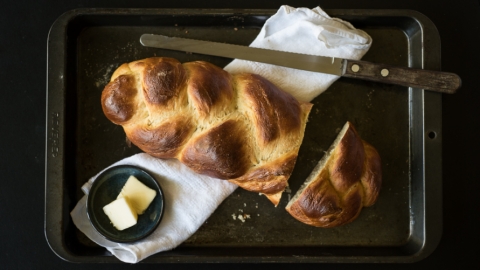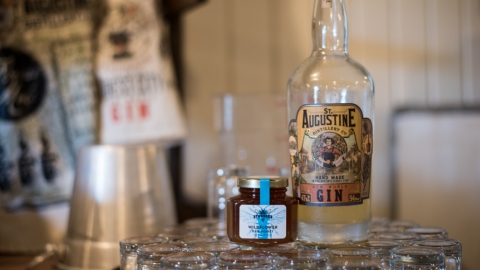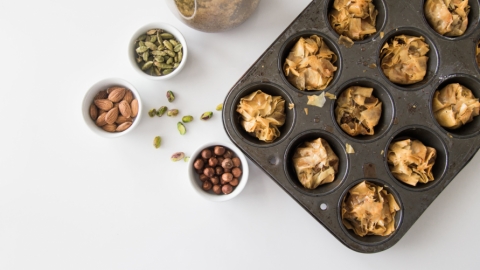The Terroir of Honey
Most people, when they think about beekeeping, imagine a serene place where the patient beekeeper, all dressed up in his bee suit, smoker in hand, gently tends the hives, while his bees fly around collecting the nectar and pollen from spring flowers, and then seemingly through magic transform that nectar into the brilliant golden liquid we call honey— nature’s perfect food.
A responsible beekeeper will never harvest honey from the hive, the bee’s home. When the nectar flows are strong, as in the spring, the bees are making more honey than they need to sustain the colony. This is the time of year the beekeeper waits for, to remove the hive cover and place small white boxes, known as supers, on top of the hives, where excess honey will be deposited by the bees. The little forager bees will travel up to three miles in search of food, so the more flowers that are blooming around the bee yard, the greater the amount of nectar the bees will bring back to the hive. Likewise, the more honey supers the beekeeper stacks on the hives, the greater the harvest of honey. In some regions of the U.S. with very strong nectar flows, it is not uncommon to see supers sometimes stacked eight or 10 high, all filled with delicious raw honey.
Eventually the nectar flow will slow down, honey production will decrease and it is time for the beekeeper to harvest the honey. Since the honey was produced not from single flower nectar, but from a wide selection of nectar sources, we call it wildflower honey or multifloral honey.
The nectar from each flower has a distinct taste. Orange blossom nectar has a citrusy taste. Given that three-mile flight range, the foraging bee would have to be surrounded by acres of orange groves for the beekeeper to be pretty sure the bees were primarily foraging on citrus nectar. If the beekeeper is not situated close to orange groves, to get that citrus flavor the hives would have to be moved closer to the trees.
Making sure the bees will predominately forage on one particular nectar source can be tricky. The bee colony is always sending out scout bees in search of the best nectar. Once the scout communicates the location of the source back to the hive, her group of forager bees will ignore all other nectar sources. The process is repeated with each scout bee in the hive and her group of foragers. The orange groves may be loaded with citrus blossoms full of nectar, but if the scout bees had already directed their sisters to other locations, they would not eagerly forage on the citrus blossoms. It’s always important, when trying to produce monofloral or single-source honey, that the bees not be placed in the groves until after the bloom begins, and then removed from the groves right before the nectar flow ends, to keep the bees from foraging on other plants in the area.
Now the beekeeper will harvest the orange blossom honey. All the supers from atop the hives will be removed, the wax coating cut from all frames in the supers and the frames of honey spun out using an extractor. The now-empty supers will be reassembled and returned to the beehives, and once again the bees are on the move to a new location where they will forage on another single nectar source. This process of moving, foraging and harvesting will be repeated again and again until all the major nectar flows have concluded, and the bees return to a normal production of honey for sustainment of their colony.
The warm Florida weather keeps flowers blooming year round, so it’s a grand opportunity for beekeepers all over the state to produce monofloral honeys: black mangrove, blueberry, blackberry, Brazilian pepper and many other minor floral varietal honeys. In the extreme lower part of Florida, beekeepers even move their hives to fields abundant with blossoms from lychee nuts, starfruits, avocados and several other tropical fruits. And even though the honey is a nectar blend, Florida Everglades honey consistently has rich dark color and one of the most exotic-tasting honeys of all the state’s nectar flows. The types of flowers the bees visit also affect the color of the honey produced, ranging from almost colorless to dark brown. Usually, light-colored honey is milder in taste and dark-colored honey is stronger.
How much honey can a beekeeper produce? A strong beehive will contain 20,000 to 60,000 bees, depending on the time of year. The little honey bee lives less than a month in the warm seasons; during her last 10 days of life, she will focus solely on foraging for nectar. One solitary foraging bee will visit 50 to 100 flowers every time she leaves the hive in search of nectar, but in her entire lifetime, she will produce only 1/12 of a teaspoon of honey.
From one hive, a beekeeper hopes to harvest 40 to 60 pounds of monofloral honey. Honey is typically stored in barrels, with each barrel containing 600 plus pounds of honey, or 600 one-pound jars, so for just one barrel of honey, the beekeeper would need approximately 10 to 15 honey bee colonies. If the beekeeper would like to harvest 20 barrels of, say, orange blossom honey, 200 to 300 hives would be needed, which equates to around 12 million bees in one bee yard!
Producing single-source or monofloral honey is hard work, long hours, many miles traveled and plenty of stings, but there’s something so exciting about introducing customers to the different flavors of honey and the fun of watching them choose the flavor they like the best that makes everything hard about the work seem inconsequential to the joy it brings to beekeepers and their friends.
To learn more about Nancy Gentry's bee production, visit Cross Creek Honey online or at a market near you. Photos feature local beekeeper Justin Stubblefield of Stubbees Honey.


